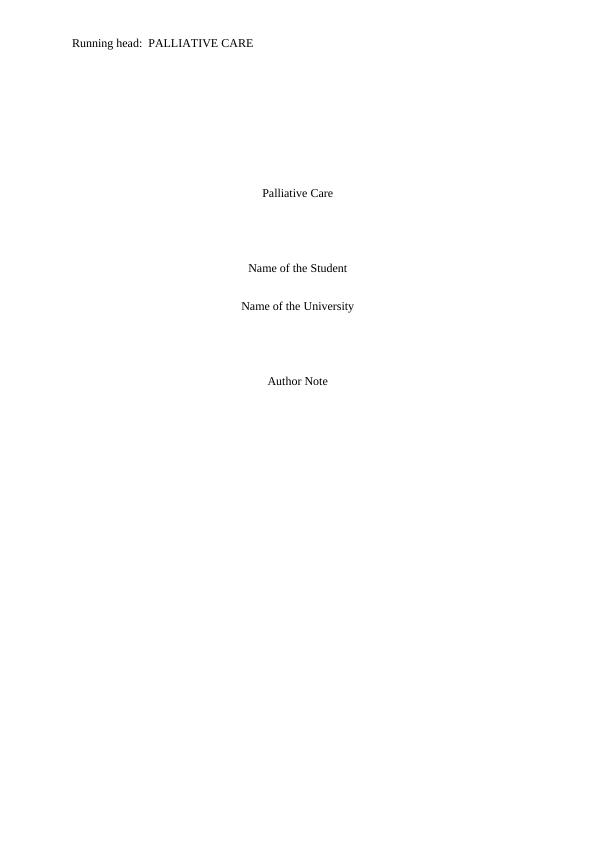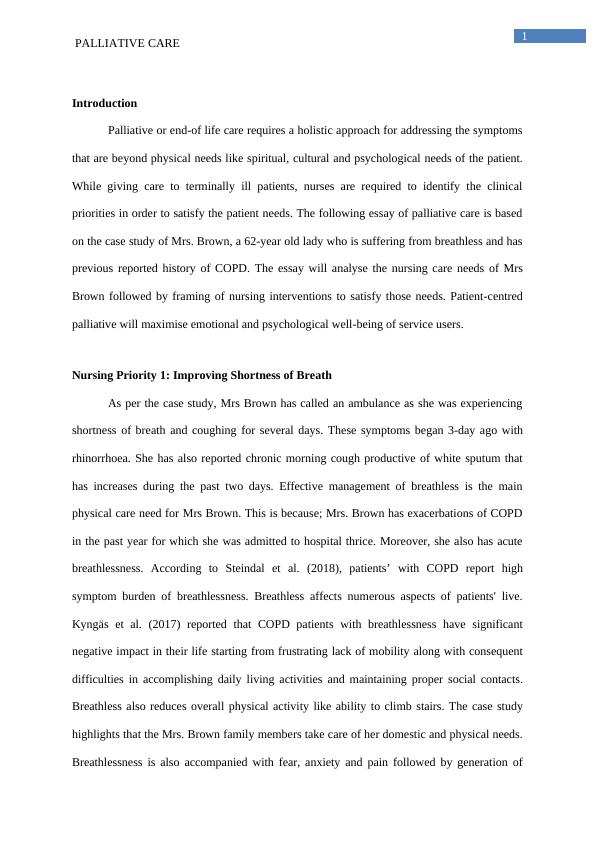Palliative Care: Nursing Priorities and Interventions
7 Pages1806 Words71 Views
Added on 2023-01-18
About This Document
This essay discusses the nursing priorities and interventions for palliative care, focusing on a case study of a patient with COPD and breathlessness. It also emphasizes the importance of patient education about palliative care and power of attorney.
Palliative Care: Nursing Priorities and Interventions
Added on 2023-01-18
ShareRelated Documents
End of preview
Want to access all the pages? Upload your documents or become a member.
Palliative Care: Strategies for COPD Exacerbation Management
|6
|1682
|50
Palliative Care for Mrs. Brown: Nursing Priorities in COPD
|7
|1773
|28
Case Study of Patient with COPD
|7
|1864
|37
Nursing | Assignment Sample
|6
|1640
|218
Palliative Care: Holistic Approach and Nursing Priorities for COPD Patients - Case Study Analysis
|7
|1901
|383
Palliative Care Approach: Case Study
|7
|1595
|456



